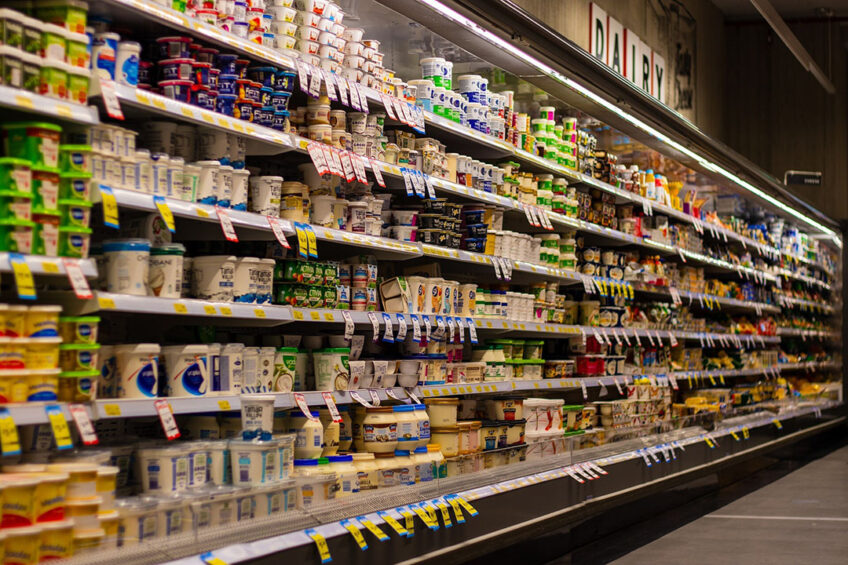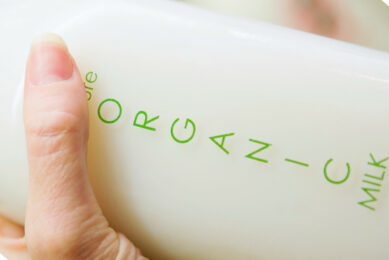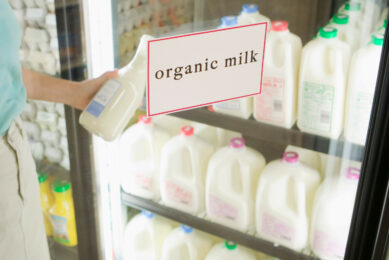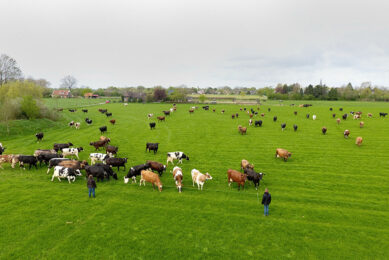Meeting organic dairy targets in the EU

In an exclusive interview, Alexander Anton, secretary general of the European Dairy Association, talks about the challenges, as well as updates, around organic dairy product marketing in the US and Australia.

While global demand is rising for organic dairy products, how much the EU organic dairy market will grow is not an easy question to answer.
Double-digit growth for the organic dairy market
According to a ResearchAndMarkets.com report, the global organic dairy product market is currently experiencing double-digit compound annual growth and will reach US$ 54.4 billion by 2025. Most of the demand is for milk but organic yogurt is also popular. “Organic dairy remains a large market in the US, but recent growth rates suggest it could start to mature,” states the report. “Australia’s market share grew through China’s organic dairy export channel. In the Mediterranean region, Saudi Arabia is dominant.”
EU’s organic target a challenge for dairy sector
One of the ambitions of the EU Farm to Fork strategy is to increase the share of organic agriculture to 25% by 2030. There are major obstacles to overcome, particularly in the dairy sector where only 4% of the current dairy herd is organic. Read more…
Just 4% of EU dairy herd is organic
In the EU, an ambitious overall goal for the near term has been set to increase the amount of organic crops farmed to 25% by 2030. This would theoretically result in more organic feed being available for dairy cattle and perhaps a corresponding increase in organic dairy product production. However, there are many other factors at play besides feed availability, and in addition, many believe the ‘25% by 2030’ goal will not come close to being achieved. Currently, only 4% of the EU dairy herd is organic.
To find out more about the road ahead for organic dairy farming in the EU, we contacted Alexander Anton, secretary general of the European Dairy Association.

Would EU countries with ample agriculture, such as Germany, France and Spain, make major gains by converting to organic farming if the goal of ‘25% by 2030’ is to be achieved?
Political ambitions are one thing; market realities are another. Back in 2004, the German farming minister at the time declared her ambition of 20% organic farming by 2010. Today, Germany is at less than 8%… The ING organic dairy report ‘Why the dairy industry will struggle to meet the EU’s organic targets’ puts a good and much-appreciated share of realism into the political picture.
The positive organic trend in dairy over recent years is significant, but not at a path to reach Brussels’ plans. Dairy farmers and dairy companies don’t fulfil political plans or ambitions, but serve markets.
Summary from the ING report ‘Why the dairy industry will struggle to meet the EU’s organic targets’
– Mixed support from farmers, industry organisations and agricultural ministers due to concerns over farm income, competitiveness and food security.
– Lack of coherent policy measures relating to EU departments such as agriculture, health and the environment, reform of the Common Agricultural Policy budget, etc.
– High transition costs and risk for farmers to ‘go organic’
– Massive gains must be made to create consumer awareness of organic products and build willingness to pay more for them
– Many EU dairy companies earn a large amount from the export and commodity markets, but demand is limited for organic products in these markets.
When consumers really want to enjoy 25% of organic dairy and are ready to pay the extra price and accept certain trade-offs, this market will be served by the European lactopshère, but we don’t see that. To get the Brussels’ political ambition translated into the reality of pastureland, dairy stables and processing plants, the support would need to be considerable – much more substantial than shifting a few dozen millions euros of the EU promotion programme budget to organic promotion.
“When consumer really want to enjoy 25% of organic dairy and are ready to pay the extra price and accept certain trade-offs, this market will be served by theEuropean lactopshère, but we don’t see that.”
Why does Austria lead the EU in amount of organic dairy farming?
Austria has a very specific dairy landscape shaped by smaller farms, many of which are in mountainous areas, which has helped to drive the change early on. The Austrian dairy sector is known as a kind of a frontrunner when it comes to GMO-free feeding, hay-milk, or organic, for example; a move that is supported by the buying habits of Austrian consumers.
In terms of growing organic farming in the EU, tell us more about the concerns over farm income. Are incentives being discussed for dairy farmers and other farmers to switch to organic? Will there be much reform of the Common Agricultural Policy (CAP) budget to redirect funds from conventional farming?
Regarding the new CAP, it comes with a new structure. Each member state will have to create and implement its own strategic plan which, among others, could be required to comply with the Farm to Fork strategy’s targets in the coming years. On organics, taking into consideration the current state of this type of farming in each member state, the new production targets could lead to big differences among member states resulting in inequalities and market distortions.

In this context, the involvement of the farmers in the drafting of the new CAP strategic plans is vital. We know that inside of these strategic plans there are expected to be the new Eco-Schemes, a new instrument designed to reward farmers who choose to go one step further in terms of environmental care and climate action. However, right now we don’t have much information on how these mechanisms would be implemented at a national level.
Nevertheless, the CAP as a whole is a rural development programme, the first pillar of which is direct payments to the farming community. Market support is the cornerstone for the development of rural Europe. This is accompanied by second pillar measures. Additionally, within the existing CAP, market and crisis management mechanisms have proven to be an effective tools to mitigate the impact of severe market turbulences. Consequently, we would encourage to reinforce the current existing mechanisms inside the CAP and to emphasise the implication of farmers in the creation of the strategic plans so that the conversion to organic farming to meet the 25% target could be reached smoothly without leaving anyone behind.
But, at the end of the day, the extra costs for organic production have to be rewarded by the markets.
Is there expected to be good progress in convincing EU consumers that the cost of organic products is worth it?
Organic is a well acknowledged option in daily food choices and will strengthen its place on the shelves. Still, consumers have different interests (knowing that price is the first reason for food choice), and the ones who are willing to pay extra may also look at other options – origin of production, ‘climate neutral’, special nutrition, etc.
How would increases in exports of EU organic dairy products spur growth of the EU dairy sector?
Even if we see a constant rise in organic EU dairy products, this market segment is still rather small. The EU Commission has authorised the opening of negotiations with Argentina, Australia, Canada, Costa Rica, India, Israel, Japan, New Zealand, South Korea, Tunisia and the US with a view to concluding agreements on trade in organic products. But in third countries, as in our Union, the consumer choice is based on very divergent individual preferences – and let’s face it, in many if not most importing countries, the price argument is a very, very valid one.
Organic dairy in Australia: a snaphot
A recent story in Dairy News Australia states that the appeal of organics is becoming increasingly mainstream in the country, “with more than 65% of Australian households purchasing organic products in the past year, according to the 2019 Australian Organic Market Report, and organic dairy equating to nearly half (48%) of all purchases.”

Asked if this is still accurate, John Droppert, industry insights and analysis manager at Dairy Australia notes that whilst sales of different organic products may become more mainstream, the organics dairy market in Australia remains a niche market. “Sales of organic milk only account for around 1.5% of total milk sales, and this has been fairly stable over the past 5 years,” he says. “According to retail panel data, around 9% of households in Australia purchase organic milk products.”
When choosing to consume organic dairy products, Australian shoppers tend to favour milk, with estimates suggesting organic milk sales account for close to 55% of all organic dairy sales. Cheese and butter are next in line.
In terms of what is driving demand for organic dairy products, Droppert points to a broader increasing preference for more ‘natural’ or ‘environmentally-friendly’ foods, but notes that this trend has also meant that “in recent years, growth in organics has been somewhat undercut by that of milk substitutes (e.g. almond, oat) that attract a similar customer profile.”
Exports and imports
Whilst Australia exports some organic dairy products to China, the country also imports significant volumes of organic ingredients (powders, etc.) from Europe and New Zealand for processing, blending and sometimes re-export. Droppert adds that some Australian organic brands (e.g. Bellamys Organic) have historically done well in China, but most of Australia’s organic milk production is consumed domestically.
Australia: Working on the cows of the future
Victorian scientists in Australia will be working on methods to reduce the environmental footprint of the Australian dairy cow and to create a more profitable and sustainable dairy sector. Read more…
However, until recently, Australian organic milk was processed almost exclusively into fresh dairy products and cheese and it’s only during the last 5 years that efforts have gone into increasing the supply of organic milk, and adding processing capacity (including powder plants) to produce a wider range of products for domestic consumption and export. “Not all ventures have been successful, however,” says Droppert, “and Australia’s leading organic milk cooperative (Organic Dairy Farmers of Australia) was a casualty of an expansion plan that went wrong.”
Whatever the market outlook, feed will remain one of the most significant challenges faced by organic dairy farmers in Australia. Droppert notes that organic hay and grain can readily be twice the price of conventional and can be limited in supply. He says that whilst every farm operates differently, the common approach for organic farmers is to operate at a lower stocking rate and use less purchased feed.










